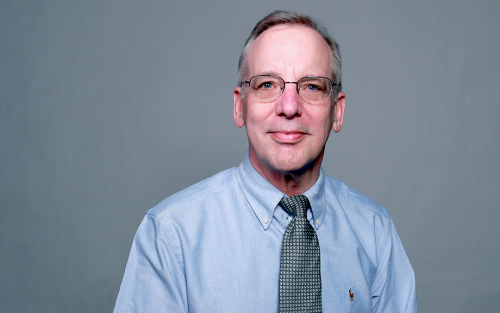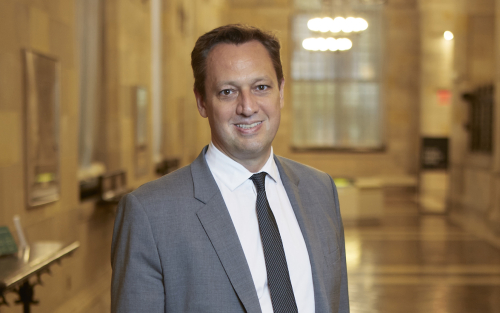The Transatlantic Economy Ten Years after the Crisis: Macro‑Financial Scenarios and Policy Responses

“The Transatlantic Economy Ten Years after the Crisis: Macro-Financial Scenarios and Policy Response,” was the focus of a conference, jointly organized by the New York Fed, the European Commission, and the Centre for Economic Policy Research in April 2018. These three institutions had previously collaborated on a series of events related to transatlantic economic relations, including a workshop in April 2014 and a conference in April 2016. Ten years after the global financial crisis, this conference came at a crucial time in the history of the relationship between the United States and the European Union, and provided an opportunity to revisit and assess recent policy responses. A number of questions were addressed by the panelists: Is the world economy back on a sustainable growth path or have we entered a secular stagnation era with persistently low interest rates and inflation? How large are the spillovers of monetary and fiscal policies? Have we done enough to maintain financial stability and deal with cross border resolution issues, which have been one of the most vexing topics in the regulatory space?
Hey, Economist! Outgoing New York Fed President Bill Dudley on FOMC Preparation and Thinking Like an Economist

Bill Dudley will soon turn over the keys to the vault—so to speak. But before his tenure in office ends after nine years as president of the New York Fed, Liberty Street Economics caught up with him to capture his parting reflections on economic research, FOMC preparation, and leadership. Publications editor Trevor Delaney recently caught up with Dudley.
Fiscal Implications of the Federal Reserve’s Balance Sheet Normalization

In the wake of the global financial crisis, the Federal Reserve dramatically increased the size of its balance sheet—from about $900 billion at the end of 2007 to about $4.5 trillion today. At its September 2017 meeting, the Federal Open Market Committee (FOMC) announced that—effective October 2017—it would initiate the balance sheet normalization program described in the June 2017 addendum to the FOMC’s Policy Normalization Principles and Plans.
Why Pay Interest on Excess Reserve Balances?

In a previous post, we described some reasons why it is beneficial to pay interest on required reserve balances. Here we turn to arguments in favor of paying interest on excess reserve balances. Former Federal Reserve Chairman Ben Bernanke and former Vice Chairman Donald Kohn recently discussed many potential benefits of paying interest on excess reserve balances and some common misunderstandings, including that paying interest on reserves restricts bank lending and provides a subsidy to banks. In this post, we focus primarily on benefits related to the efficiency of the payment system and the reduction in the need for the provision of credit by the Fed when operating in a framework of abundant reserves.
Why Pay Interest on Required Reserve Balances?

The Federal Reserve has paid interest on reserves held by banks in their Fed accounts since 2008. Why should it do so? Here, we describe some benefits of paying interest on required reserve balances. Since forcing banks to hold unremunerated reserves would be akin to levying a tax on them, paying interest on these balances is a way to eliminate or greatly reduce that tax and its negative effects.
The Role of Central Bank Lending Facilities in Monetary Policy

Central bank lending facilities were vital during the financial crisis of 2007-08 when many banks and nonbank financial institutions turned to them to meet funding needs as private funding dried up. Since then, there has been renewed interest in the design of central bank lending facilities in the post-crisis period.
Hey, Economist! How Do You Forecast the Present?

New York Fed macroeconomists have been sharing their “nowcast” of GDP growth on the Bank’s public website since April 2016. Now, they’ve launched an interactive version of the Nowcasting Report, which updates the point forecast each week, but also helps users better visualize the impact of the flow of incoming data on the estimate produced by the model. Tables offer more detail on the data series informing the estimate. The interactive version also reports the staff nowcast back to January 2016, a longer nowcast history than has previously been available. Cross-media editor Anna Snider spoke to Domenico Giannone, Argia Sbordone, and Andrea Tambalotti—economists who developed the model underlying the report and produce estimates weekly with the help of research analysts Brandyn Bok and Daniele Caratelli—about nowcasting and its role in the policymaking process.
QE Frictions: Could Banks Have Favored Refinancing over New Purchase Borrowing?
Hey, Economist! Tobias Adrian Reflects on His Work at the N.Y. Fed before Heading to the IMF

Tobias Adrian is leaving the New York Fed to become the Financial Counselor and Director of the Monetary and Capital Markets Department at the International Monetary Fund (IMF). In announcing Adrian’s appointment, Christine Lagarde, managing director of the IMF, described Tobias as “internationally highly regarded for his insightful analytical work.” Until he starts his new position at the beginning of 2017, Adrian will be winding down his service as Senior Vice President of the New York Fed and Associate Director of the Bank’s Research and Statistics Group. Before he moves on to the IMF, Adrian shared some insight on his time at the Bank.
Escaping Unemployment Traps

Economic activity has remained subdued following the Great Recession. One interpretation of the listless recovery is that recessions inflict permanent damage on an economy’s productive capacity. For example, extended periods of high unemployment can lead to skill losses among workers, reducing human capital and lowering future output. This notion that temporary recessions have long-lasting consequences is often termed hysteresis. Another explanation for sluggish growth is the influential secular stagnation hypothesis, which attributes slow growth to long-term changes in the economy’s underlying structure. While these explanations are observationally similar, they have very different policy implications. In particular, if structural factors are responsible for slow growth, then there might be little monetary policy can do to reverse this trend. If instead hysteresis is to blame, then monetary policy may be able to reverse slowdowns in potential output, or even prevent them from occurring in the first place.











 RSS Feed
RSS Feed Follow Liberty Street Economics
Follow Liberty Street Economics